The MGA With An Attitude
Using TUBES in TUBELESS TIRES #2 - TI-104A
From the prior article, oversize inner tubes are a definite no-no, as any fold or wrinkle in the tube is almost guaranteed to split the tube. Use correct size inner tubes.
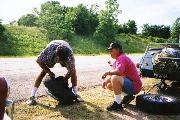


For most car tires in recent decades, tubeless tires are the common standard. These days you will be hard pressed to find any tube-type automotive tire on the market. The primary difference between tube-type and tubeless tires is the inner liner in tubeless tires that serves the same purpose of tubes, to have a non-permeable liner to prevent air from leaking out. Material for that liner should be 100% halogenated butyl (halobutyl) rubber (which is a relatively expensive material). Some less expensive tires use an inner liner with less than 100% halobutyl rubber, or a thinner inner liner, resulting in faster leak down and need for more frequent pressure checks and airing up. Tires with more expensive 100% halobutyl inner liners lose air at a rate of 2.0 - 2.5 percent per month. Tires with cheaper, blended butyl inner liners lose air at a rate 4.0 - 5.0 percent per month. Inner tubes can reduce the leak down rate, but that is not the only concern, and there are some reasons why use of inner tubes may be somewhat detrimental (like harsh ride, heat build-up, and derating the speeed rating).
 Additionally, since modern tires are intended to run tubeless, there is progressively less concern for making them "tube friendly". Inner tubes need a certain level of smoothness inside the tire and wheel assembly. Little rubber ridges inside the tubeless tire can eventually abrade the tube to cause stress cracks and pressure failure. So if you are going to use tubes you should check inside the tires, and if necessary remove notable ridges and molding flash.
Additionally, since modern tires are intended to run tubeless, there is progressively less concern for making them "tube friendly". Inner tubes need a certain level of smoothness inside the tire and wheel assembly. Little rubber ridges inside the tubeless tire can eventually abrade the tube to cause stress cracks and pressure failure. So if you are going to use tubes you should check inside the tires, and if necessary remove notable ridges and molding flash.
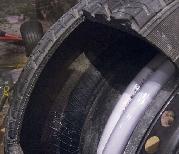
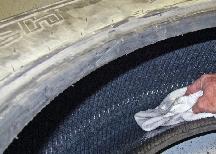
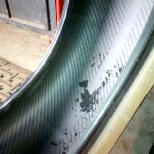
New tires often have stickers inside, which may be either paper or Mylar. Being a flat printed piece, the stickers almost never conform to the curved contour inside the tire, so the stickers most often will curl up at the edges or wrinkle in the middle. These curls and wrinkles will also crease the inner tube to cause leak failures. Never leave any manufacturer's stickers inside the tire if you will be using tubes.
On Jan 13, 2018, Nick Kopernik in western Connecticut, USA wrote:
"Finally tackled a recurring issue with the right rear tire losing air pressure. I've replaced a couple of tubes on that rim and over time a slow leak would develop. This time instead of heading to the tire dealer who typically would do the work, I dismounted the tire myself. I marked the location of the tire on the rim before pulling the tire off and removing the tube. The tube was inflated and submerged in a tub of water; it only took a few minutes of rotating the tube in the water before the leak presented itself. I marked the leak on the tube and then matched it up to the marks on the tire and rim. Sure enough, the cause of the leak turned out to be an old label which was on the rim itself. Seems that over time the label bunched up and created a sharp ridge which would chafe through the tube; it was a metallic label. I removed the label and cleaned up the inside of the rim, sanded the inside of the tire just in case, and have a new tube ready for installation, but that's an effort for tomorrow.
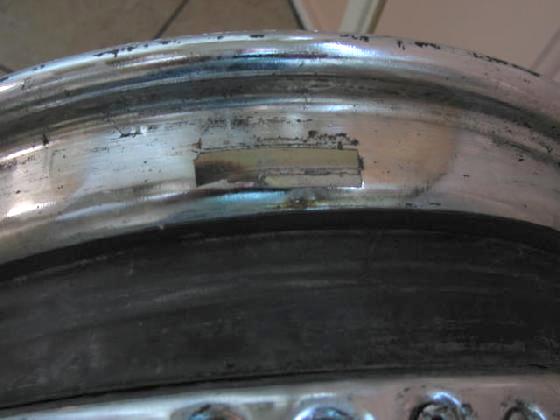
|